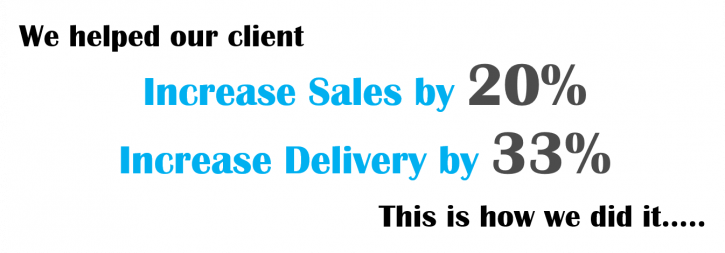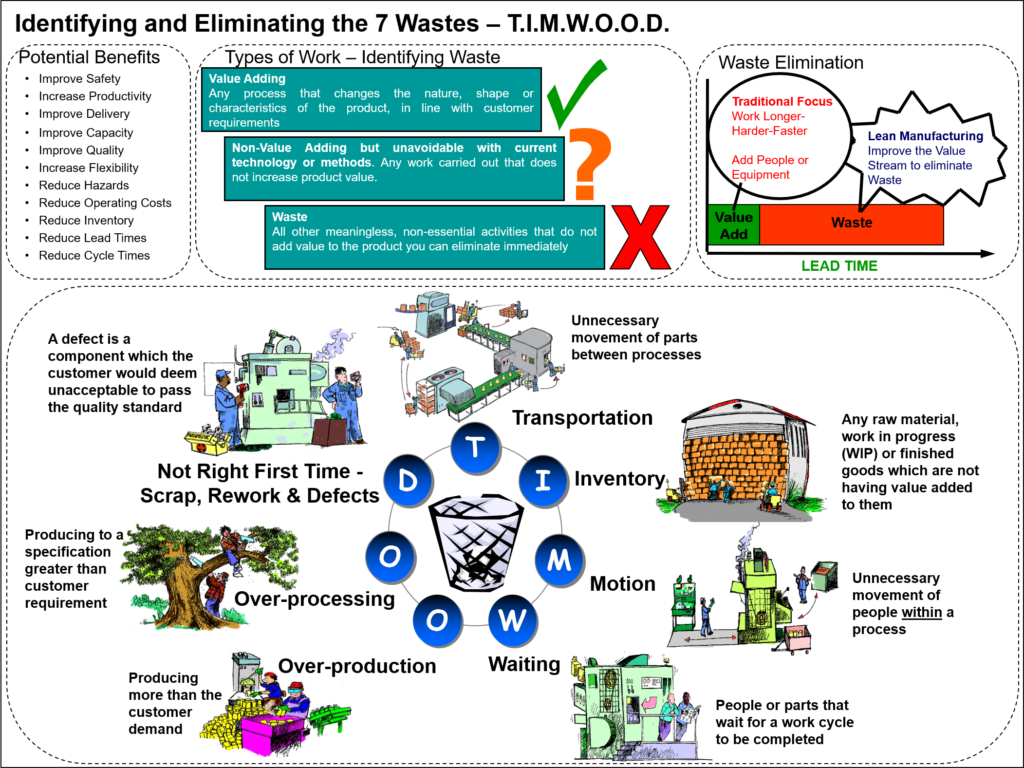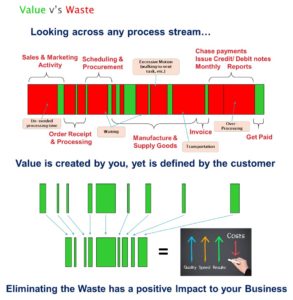I’ve spent more time than I can count walking through manufacturing plants across the UK. From gleaming, state of the art aerospace facilities to gritty, third generation metal fabricators. And you know what? You can often feel when something isn’t quite right. It’s not always something you can put your finger on immediately. It’s a certain kind of organised chaos, a low hum of inefficiency that hangs in the air.
The term ‘lean manufacturing’ gets thrown around a lot. Sometimes it sounds like another piece of corporate jargon, a consultant’s buzzword designed to sell you a complicated new system. But when you strip it all back, lean is just common sense. It’s about creating more value for your customers with fewer resources. It’s about respect. Respect for your employees’ time, respect for your materials, and respect for your customers’ trust.
The thing is, the symptoms of an inefficient operation are often hiding in plain sight. They become part of the daily grind, the “that’s just how we do things here” mentality. But these small, persistent problems are like slow punctures. They gradually drain the energy, profit, and potential from your business. This isn’t about pointing fingers. It’s about learning to see your own operations with fresh eyes. So, let’s walk through your business together, virtually, and see if any of these five signs feel a little too familiar.
1. The Ever-Growing Pile of Defects and Rework
You know the area I mean. Every factory seems to have one. It might be a designated corner, a set of red bins, or just a pallet that everyone avoids making eye contact with. This is the rework pile. It’s where products with defects go to be fixed, stripped for parts, or, let’s be honest, sometimes just to be forgotten about for a while. A few defects are inevitable, of course. Nobody’s perfect. But when that corner starts to feel less like a temporary holding bay and more like a permanent department, you have a problem.
I remember visiting a precision engineering firm in the Midlands. They were proud of their skilled team, and rightly so. But their lead times were slipping. When we walked the floor, we found their ‘quality control’ area was actually a full blown rework station. Two of their most skilled engineers spent most of their day correcting mistakes made earlier in the process. They were brilliant at it, but what a waste. Their best people were effectively papering over the cracks.
Every item that lands in that pile represents more than just a mistake. It’s wasted material. It’s wasted labour. It’s a disruption to the production schedule. Worse, it’s a gamble. Because for every defect you catch internally, you have to wonder, how many are slipping through to the customer? That’s when the real costs start to mount. Customer returns, warranty claims, and the slow, painful erosion of your reputation. The trust you’ve worked so hard to build can be undone by a few bad batches. A lean approach tackles this at the source. It’s not about getting better at fixing mistakes. It’s about building processes that make it almost impossible for the mistake to happen in the first place.
2. That Warehouse Full of ‘Just in Case’ Stock
Now, let’s take a look at your warehouse or stockroom. Is it a well organised, fluid space where materials and finished goods move through with purpose? Or does it look more like a long-term storage unit? I’m talking about pallets of raw materials gathering dust, components bought in bulk ‘on a good deal’ two years ago, and towers of finished products waiting for a home.
Many businesses see a full warehouse as a sign of security. It feels safe, right? We’re prepared for anything. In reality, excessive inventory is one of the classic wastes in lean thinking. And for good reason. All that stock is, in essence, cash. It’s your working capital, sitting on a shelf, doing nothing. It can’t be invested in new machinery, it can’t be used for research and development, and it can’t pay your team’s wages. It just sits there.
Beyond tying up cash, that mountain of inventory is hiding other, deeper problems. If you have weeks of stock on hand, you don’t feel the immediate pain of a machine breakdown or a supplier delay. The problem gets masked by the buffer. You only realise the true impact when you finally burn through the pile, by which time the original issue is long forgotten. It creates a disconnect between cause and effect.
The lean philosophy flips this on its head with concepts like ‘just in time’ production. Now, this isn’t about running on fumes and having nothing in stock. That’s a common misconception. It’s about creating a system so reliable and a supply chain so responsive that you only need to hold what you need for the immediate future. It forces you to fix the underlying problems because there’s nowhere for them to hide. It’s a brave step, I’ll admit, but the reward is a business that is agile, responsive, and financially much, much healthier.
3. The Unpredictable Rhythm of Stop and Start
Think about the sound of your factory floor. Is it a consistent, productive hum? Or is it a jarring symphony of stops and starts? A machine runs for an hour, then it’s down for twenty minutes for a tricky changeover. A production line flows smoothly, until someone realises they’re waiting on parts from another department. These frequent disruptions and repeated periods of downtime are a massive red flag.
This isn’t just about catastrophic breakdowns, though those are obviously a problem. It’s more about the small, accepted stoppages that bleed your productivity away minute by minute. Each time a machine stops unexpectedly, your plan for the day takes a hit. Lead times become a matter of guesswork rather than a confident promise. Unplanned maintenance costs creep up, and your team’s frustration levels rise with them. You end up in a constant state of firefighting, lurching from one crisis to the next.
What’s often at the heart of this? A lack of standardised work. When every operator has their own ‘special’ way of setting up a machine, or there’s no clear process for replenishing consumables, you introduce variation. And variation is the enemy of predictability. Lean thinking introduces rigour and standardisation. Not to turn people into robots, but to create a stable, reliable foundation. When the basic processes are documented, understood, and followed by everyone, you eliminate a huge source of self-inflicted downtime. It creates a calm, controlled environment where problems are the exception, not the rule.
4. The Agony of Another Missed Delivery Deadline
This is where all those internal issues, the rework, the stock hunting, the downtime, finally break out of your four walls and impact the one person you can’t afford to disappoint: your customer. Missing delivery deadlines is a horrible feeling. It’s the awkward phone call, the apologetic email, the sense that you’ve let someone down. Do it once, and most customers will be understanding. Do it repeatedly, and you’re putting your most valuable contracts at risk.
Late deliveries are rarely the result of a single, dramatic event. They are the slow accumulation of all the small inefficiencies we’ve been talking about. A shipment is late because a batch had to be reworked, which pushed it back a day. That delay was compounded because a key machine was down for half a day. And finding the right packaging took an extra hour because the storeroom is a mess. Sound familiar? Each step adds a little bit of friction, a little bit of delay, until your schedule is in tatters.
Your reputation is built on your ability to deliver what you promise, when you promise it. When that starts to crumble, everything else becomes harder. You lose negotiating power. You get overlooked for new opportunities. You might even lose long term clients to competitors who are simply more reliable. Lean helps by forcing you to look at your entire process, from order entry to final dispatch, as a single, connected flow. By mapping this ‘value stream’, you can identify the bottlenecks and the delays. You can streamline scheduling and create a production flow that is smooth and predictable, allowing you to quote lead times with confidence, not just hope.
5. That Sinking Feeling: Low Morale and Resistance
This last one is perhaps the most important, and the most human. You can have the best machines and the cleverest processes in the world, but if your team isn’t on board, nothing will stick. What does low morale look like? It’s a lack of engagement in meetings. It’s the high staff turnover you can’t seem to get under control. It’s the cynical sighs and the ‘here we go again’ attitude whenever a new initiative is announced.
Often, this resistance isn’t because people are lazy or stubborn. It’s because they’re burnt out. They’re tired of working within broken systems that set them up to fail. They’re frustrated by seeing the same problems crop up again and again with no real solution. They’ve been asked to fight fires for so long that they’ve forgotten what it’s like to do anything else. When management then comes in with a “new way of working”, it can feel like just another burden.
This is where so many improvement initiatives fail. They are imposed from the top down, without respecting the knowledge and experience of the people on the factory floor. The most powerful secret of lean, I think, is its fundamental principle of ‘respect for people’. A true lean transformation isn’t about telling people what to do. It’s about empowering them. It’s about giving them the tools and the permission to solve the problems they face every single day.
When you start asking the operators, “what frustrates you about this job?” and “what would make it better?”, you unlock an incredible source of innovation. Involving your team in building the solutions creates ownership. Morale improves not because of a pay rise or a company outing, but because people feel heard, valued, and trusted to make their own work better. This positive engagement becomes the engine that drives continuous improvement long after any consultants have gone home.
It’s Time to Listen to What Your Business is Saying
So, there you have it. The overflowing rework bin, the cash tied up in the warehouse, the constant stop start of the production line, the dreaded late delivery calls, and the quiet resignation on the faces of your team. These aren’t just minor operational headaches. They are clear, loud symptoms that your business is carrying too much waste and that its processes are working against, not for, your people.
Recognising these signs is the first, most critical step. If you found yourself nodding along to one, or maybe even all five of these points, please don’t be discouraged. It simply means there is a huge, untapped potential for improvement waiting to be unlocked in your business. It’s time to stop normalising the inefficiencies and start a conversation about how a lean, common sense intervention could transform your operations from the ground up.
Which of these signs feels most pressing in your business right now? I’d be genuinely interested to hear your thoughts in the comments below.
💡 Boost Your Business Performance Today!
Our Lean Coaching Programme has a proven track record of leading companies in operational excellence. Transform the way your business thinks and grows – the benefits are right at your fingertips.
Learn more about our Lean Coaching Programme Today! – Click Here












